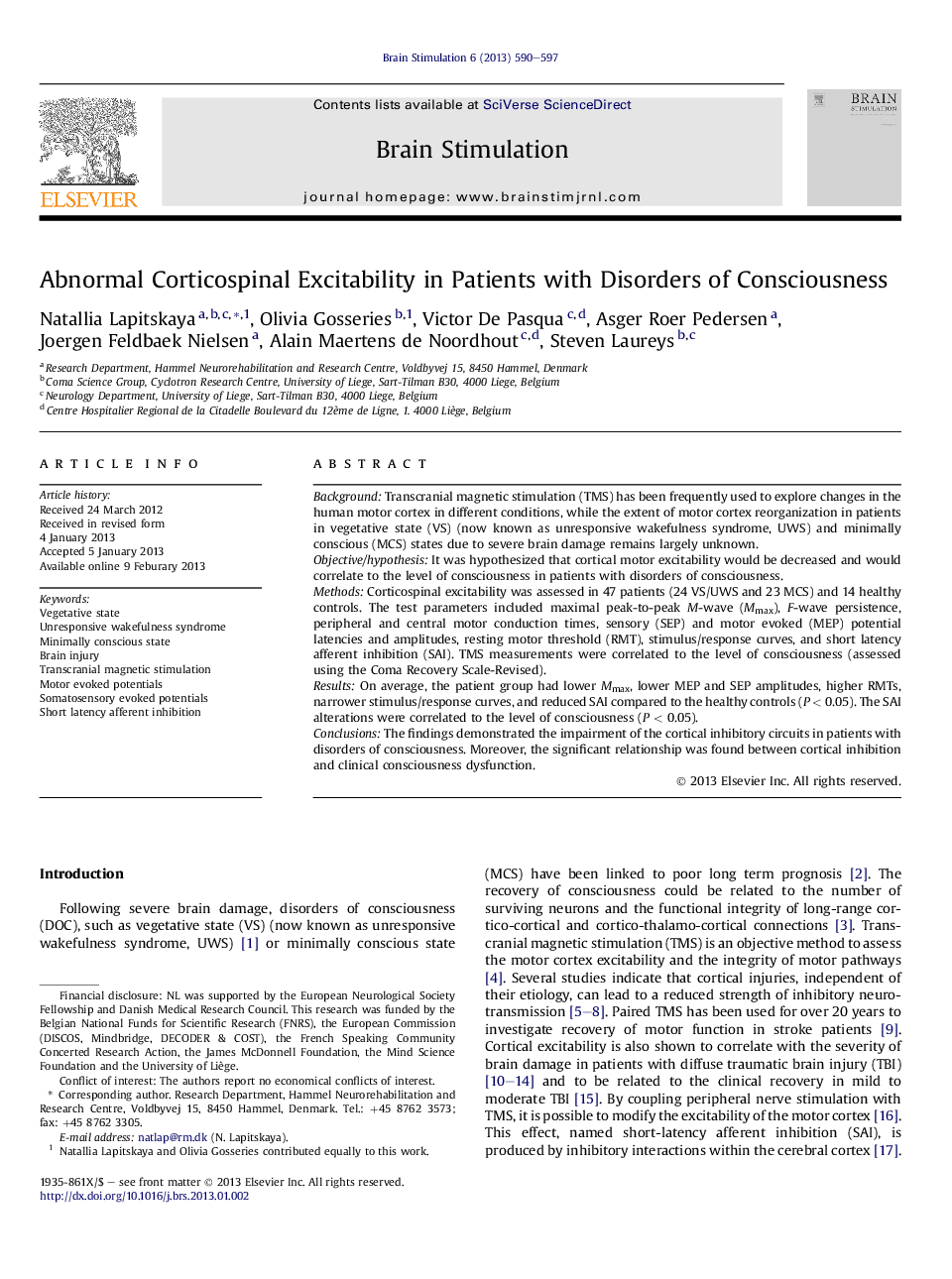| Article ID | Journal | Published Year | Pages | File Type |
|---|---|---|---|---|
| 3038922 | Brain Stimulation | 2013 | 8 Pages |
BackgroundTranscranial magnetic stimulation (TMS) has been frequently used to explore changes in the human motor cortex in different conditions, while the extent of motor cortex reorganization in patients in vegetative state (VS) (now known as unresponsive wakefulness syndrome, UWS) and minimally conscious (MCS) states due to severe brain damage remains largely unknown.Objective/hypothesisIt was hypothesized that cortical motor excitability would be decreased and would correlate to the level of consciousness in patients with disorders of consciousness.MethodsCorticospinal excitability was assessed in 47 patients (24 VS/UWS and 23 MCS) and 14 healthy controls. The test parameters included maximal peak-to-peak M-wave (Mmax), F-wave persistence, peripheral and central motor conduction times, sensory (SEP) and motor evoked (MEP) potential latencies and amplitudes, resting motor threshold (RMT), stimulus/response curves, and short latency afferent inhibition (SAI). TMS measurements were correlated to the level of consciousness (assessed using the Coma Recovery Scale-Revised).ResultsOn average, the patient group had lower Mmax, lower MEP and SEP amplitudes, higher RMTs, narrower stimulus/response curves, and reduced SAI compared to the healthy controls (P < 0.05). The SAI alterations were correlated to the level of consciousness (P < 0.05).ConclusionsThe findings demonstrated the impairment of the cortical inhibitory circuits in patients with disorders of consciousness. Moreover, the significant relationship was found between cortical inhibition and clinical consciousness dysfunction.
